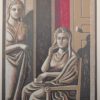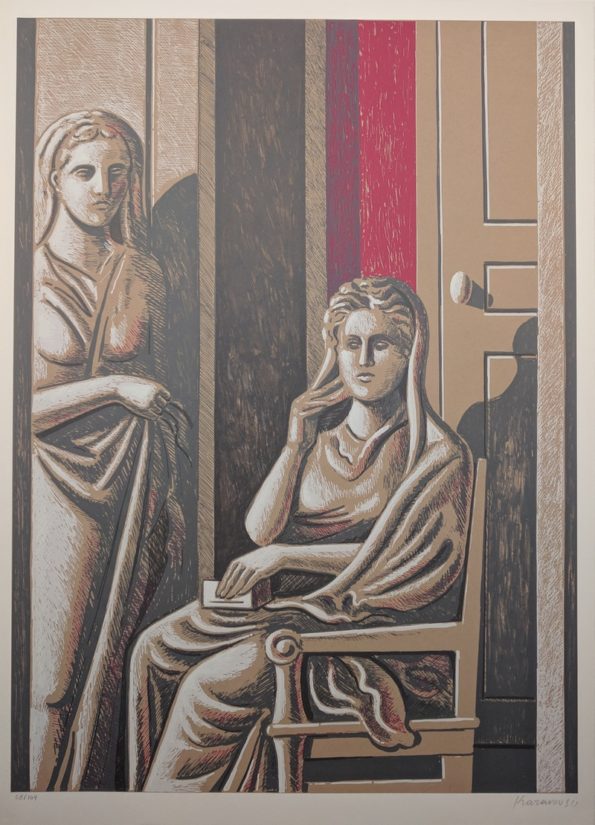I have known Sarantis Karabouzis for many years and I think no one can question the honesty of his work when he knows the painter, Sarantis Karavouzis. The painter is a wonderful person that belongs to the silent world of art. He is modest, silent and feels that he lives in his own world. What is the world of Sarantis Karavouzis like? It’s a world of history. A world of things he has been through and have left a mark in his memory. He is no longer there, but it’s his story, his dreams, his worries, his imagination. The world of Sarantis Karavousis is a world between a myth and oblivion (???). The atmosphere in which they swim; one would say the objects in the painter’s work, it is an atmosphere of silence, and in order to get inside, he must take out his shoes, as is the case in the sanctuary of the temples. Still life objects of everyday life, a glass, a bottle, a match, a broken object, an inscription that half-reads what is written on it, a white coral, a mirror that held an apnea from the form that passed in front of it, a half-open door leading where; to death, to life, to memory, to the past, to the future, to infinity? This is the world of Sarantis Karavouris. If he was not a great painter, this world could not be painted. Be sensed. He speaks to us with the language of colors. His technique is precise and light, almost hand-crafted. There is nowhere any sharpness, no shine. Everything is greyish, all are bathed in this light that does not have a specific time. Because with the light that has been found, it is refined through sorrow or regret.
– Gray but not without color. Because Karavouzis is a cultur, his gray is inspired by color. I love the world of Sarantis Karavousis. It relaxes me and brings me back to the reflection that we have forgotten in the time we live, in the throes of modern life that distracts us from our world, ourselves and silence (which is the only condition for us to identify with ourselves and think of our destiny.
Director of the National Gallery, Historical Art, Mrs. Marina Kazamblakis
Source: artmag.gr




